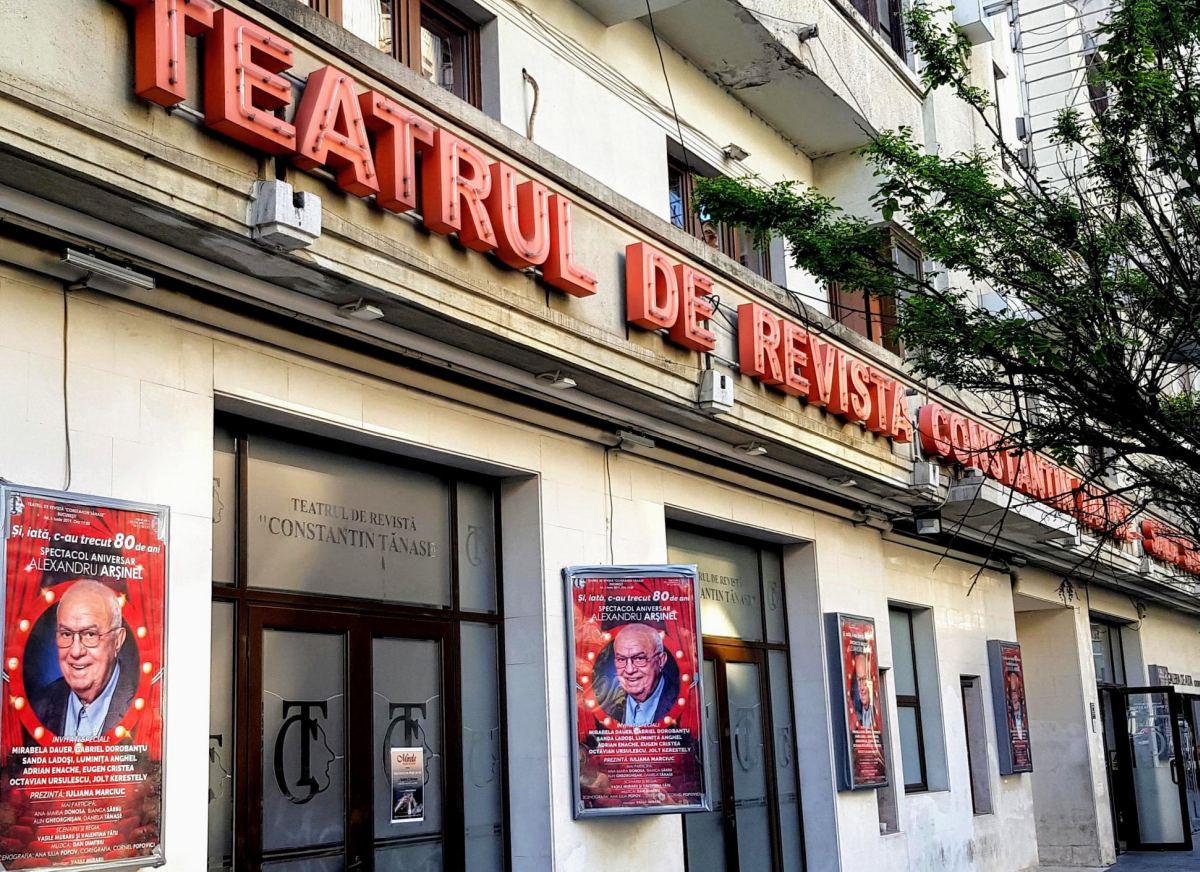Architects of Bucharest: Leonida Negrescu and Jean Monda
An overview of the two artists' architectural works

Steliu Lambru, 30.03.2024, 14:00
A walk on the streets of Bucharest, many of which are still home to the old bourgeois manors, will inevitably impress walkers-by through the opulence of their architectural design. From marble plates pinned on houses or buildings, people can learn who the architect was. Two major names stand out when it comes to the houses of the old bourgeoisie in Bucharest – Leon Schwartz, better known as Leonida Negrescu, and Jean Monda. Felicia Waldman has been teaching the history of Jews in Romania at University of Bucharest. She told us more about the biography and projects of these two artists, starting with Leon Schwartz.
“Leon Schwartz was born in 1857 in Bucharest. He graduated from the Roads and Bridges School, and in 1879 he went to Paris where he enrolled at the School of Fine Arts, the Architecture Department. He was influenced by the works of Charles Garnier, who designed the Opera in Paris, an iconic representative of the Second Empire eclectic style. In 1887, he got his architect diploma and secured employment as an assistant inspector commissioned for the Central School building in Paris. He also oversaw construction works for all the buildings in the Luxembourg district in the French capital-city. In 1888, he returned to Bucharest as chief-architect of the Romanian Railway Company. It was a big exception, as you didn’t see many Jews in such high-ranking office. He helped build the docks in the ports of Brăila and Galați and spent the next 7 years working as a tenured architect with the Ministry of Religious Affairs and Public Education, again marking a new premiere in Romania. In 1895, he stepped down to devote himself to private projects”.
Leon Schwartz laid his mark on a number of beautiful buildings in Bucharest before 1945. Felicia Waldman told us more:
“He designed several iconic buildings in Bucharest, including Jockey Club, the Trade Academy, the former Splendid Hotel, the Orfeu Music Store, all of which were on Victory Road and were demolished during the communist regime. He also built monuments that have endured to this day, such as Arenele Romane in Carol Park, which is an amphitheater for live performances, the Choral Temple Fraternity Boarding School, today the headquarters of the Federation of Jewish Communities in Romania. For all his merits, Leon Schwartz was one of the first Jews to receive the Romanian citizenship in 1894. He died in 1931 and was buried at the Filantropia Cemetery in Bucharest, whose chapel he designed”.
The second architect whose legacy is still visible in modern-day Bucharest was not actually a dweller of the capital-city. Jean Monda’s works, however, were no less important for the city, Felicia Waldman says.
“Jean Monda was born in 1900 in Ploiești. He graduated the Politechnics School in Milan. He returned in 1924 with a fine arts education typical of his age, specializing in austere Art Deco and a moderate strand of Modernism. He settled in Bucharest and was commissioned to design a number of real estate projects for Jews with refined tastes and knowledge of Western architectural trends. In 1932 he built a house on Armenească Street for Soli Gold. Jean Monda collaborated extensively with the Jewish engineer Jean Berman, for whom he built a house on Luca Stroici Street in 1930. That same year he designed the apartment building of his own residence on Tudor Arghezi Stret. He lived at apartment no. 2 his entire life. In the second half of the 1930s, Jean Monda started teaching architecture at the Architecture Department of the Jewish College, a private university set up by the Jewish community addressing Jewish students who no longer had access to public schooling”.
Jean Monda’s name is frequently displayed on marble plates on houses in Bucharest, and his works are featured in Romanian architecture textbooks. Felicia Waldman has more details.
“After 1948, after all his properties were seized, Jean Monda’s activity came to a halt, considering that in the two previous decades he had built over 25 lavish buildings of excellent design, the obvious result of a great professional and a talented architect. He wrote and published a number of architecture articles and 5 books, after publishing his first monography in 1940. Most of the buildings Monda designed can be observed today, as they bear his name and the year they were built. Monda also designed various utility buildings such as Regal Cinema and Colos Bar, built in 1927 and 1930 on Elisabeta Boulevard, which were demolished. He also designed the Frascati Performance Hall, the Constantin Tănase Theatre and residential buildings with the Eforia and Studio cinema halls at street level over 1945-1946 and 1946-1948 on Magheru Boulevard”.
Leon Schwartz and Jean Monda are important figures tied to the architectural history of Bucharest, evidence of which can be found on the countless marble plates throughout the city bearing their names. (VP)





























